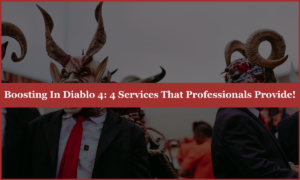Learn To Buy Real Estate With Low Money | Become A Investing master
The first way that you can invest in real estate with zero of your own money and that’s using private money. Now I know a lot of people are turned off by private money because it is a higher interest rate.
Typically you’re gonna pay anywhere between eight to 15% but it is a very good option when you’re doing more short-term investment strategies. Like a fix and flip, or if you’re doing a BRRRR. because you’re using that money to increase the value in the home with the plan to turn around, refinance, pay that high-interest private money back. And then you’re in that property for zero of your own money. There are plenty of sites like Ask Reader where you can directly ask questions to experts in these fields.
So it is a very good strategy. There are literally hundreds and thousands of people doing that every day as we speak. So it is definitely something that you should look into research more, ’cause it can help you grow your portfolio very quickly with none of your own money. But when it comes to private money you really have sort of two options.
- You have hard money lenders, which is more of a professional business lending out their money.
- They’re usually more strict in terms of the higher interest rates.
- But there’s also a lot of personal people who have money in their savings account, money in their retirement savings account, that are willing to loan that money to you.
- The good thing with dealing with a private individual is that you usually have more flexibility when you’re looking to negotiate terms.
- So you can sometimes negotiate a lower interest rate.
You can negotiate maybe a balloon payment, which is instead of paying monthly interest, you pay one big balloon payment at the end of the loan, which can kind of free up your cash flow when you’re doing a fix and a flip.
So it’s more you’re relying on the appreciation to tap into to pay that loan back. So that is the best way that you can really do private lending. If you can find personal individuals who are gonna lend it to you, just because you have more flexibility and you can really work with the terms and figure out something that works good for you and good for them. Now we actually work with private lenders for some of our investments.
So if you want to lend your money privately and have a little bit more of a passive income stream then just send me an email. I’ll send it right here. And we can talk more about that. Let’s hop into option number two which is a lease to own, better known as maybe rent own depending on where you are.
Now, with the lease-to-own rent-to-own strategy, it’s not always zero money down but it can definitely be little to no money down depending on how you structure it. So what a rent to own is. It’s when you have a tenant who’s living in your home and they have the option to buy that property from you. So basically they are renting to own as the term says.
So they’re basically living in it, paying rent, saving up for their down payments so that they can close on the property. Now typically when you’re doing a rent own you normally have what’s called an option payment which is right at the beginning of it.
And I’ve seen these be anywhere between 5,000, 10,000, 20,000, sometimes more. So that’s how you could get into this strategy with zero to very little money down because you’re using that option payment that you’re getting from the tenant-buyer to offset your costs. So with this rent-to-own strategy, there are sort of two different ways that you can structure it.
One is the house first strategy which is where you already own the home. And you just go out and your market and you find a tenant-buyer who’s gonna move into your home as a renter and they have the option to buy. QnA Site is very beneficial if you want to ask questions related to saving money or investing.
Now, when they have the option to buy, typically you’ve figured out what the future purchases price will be based on the value today, future appreciation you sort of work all those numbers out. But basically, you already have the house. You’re finding someone to come in who’s gonna rent from you, and they have the option to buy it in the future.
The other option is what’s called tenant first strategy. And that’s where instead of you having the house first you go out and you find a tenant first who’s willing to put up that option payment upfront that five, 10, 15, whatever. You go with them. And you find a home that they liked that they wanna buy but you buy it under your name because they can’t qualify for it yet. And then they move in. And once again now they’re paying you that option payment each month with the future purchase price figured out down their road.
So hopefully you’ll close on in the future. And there’s your profit. Now with this strategy, there are pros and cons. One of the pros is definitely usually higher cash flow ’cause they’re paying a higher rent each month which is going towards their down payment. You’re getting that option money upfront, which is good because you know that person has saved them money. And they’re gonna treat your home with respect.
The other thing is normally with the rent-to-own strategy you have the tenant-buyer because they are renting it from you to buy.
So usually they’re responsible for most maintenance costs. So anything that pops up unless it’s a big structural thing they’re responsible for it. So it kind of saves you a lot of headaches and you probably don’t need property management with that kind of structure, just because that person’s already there to buy the home in the future.
So you’re kind of saving costs there as well. Now cons are, there is a chance that they’re not gonna close on the property. Now, this can be good and bad because technically that option money they give you upfront.
That is non-refundable. So technically if a person doesn’t close on the property and decides to move you get to keep that deposit that they gave you. That’s where you can get some issues because obviously, a person has given you 10, 20 grand.
They’re not really happy with just walking away from it. So you can have some legal issues there but as long as you structure your agreements and legal documents properly, it shouldn’t really be an issue. But it is a potential con because we wanna make sure people are having a good experience. So just something to keep in mind. So option number three is seller financing. So seller financing is where you found a place to purchase.
And the owner of the home is actually gonna take back a loan against that property that they’re selling you. So you can definitely do this with a hundred percent financing. You can definitely find people who are willing to do that or even just, maybe you need 5% down or smaller down payments. So it’s sort of a zero to low money option.
Since you’re dealing with a private individual again, it does allow you to have so many different options very flexible. So it really comes down to what the seller and you are willing to agree to. So you have a lot of, a lot of wiggle room which is a nice thing with seller financing. Usually, this only works if that seller has a lot of equity in the home or it’s free and clear and they own it, which gives them the flexibility to provide you with seller financing.
But there are so many different ways to do it. And as long as you can create a good win-win deal with the seller. It’s definitely something that can help grow your portfolio very quickly. Now you just have to be mindful of when you are doing one of these
I’ve seen a lot of gurus marketing this strategy and trying to get people to go and buy like rundown crappy houses that people are just trying to get rid of. And that’s why they’re offering seller financing. So you wanna be mindful that you’re not falling into that trap.
And that you’re really focusing on buying good properties in good areas, that has a lot of upside appreciation, and you can find good tenants because that’s gonna save you a lot of headache down the road. The next option we have is a joint venture partnership or a JV as a lot of people say.
And really what a JV partnership is. It’s when you and another individual decide to partner on a property purchase. And once again, you’re dealing with a private person. So this can be structured in an endless number of ways.
The typical traditional way is a 50/50 split where one of the partners is the money partner. So they bring the money, they qualify for the mortgage, and the other partner which would be you is the operations partner which is you find the deal. You close on it.
You organize any repairs that need to be done. Then you find the tenant, get the lease signed, get everything in, and then you manage the property. And then you have your money partner that just collects their 50% of the profit. And then when you sell down the road you each split the profits. The good thing is like I said before you’re dealing with another person. So there’s an endless number of ways that you can set up a JV partnership.
It doesn’t have to be that 50/50 split, you could have it at 60/40, 70/30. You both could be on the mortgage. You both could put in a little bit of money. So really just comes to what works for you, what works for them, and what you guys decide on. That can kind of create that JV partnership. Next up we have what’s called an equity takeout.
So this really applies more to a person who already owns a home. Maybe it’s their primary residence. But they’ve paid down their mortgage for a while or it’s gone up in value and they have equity in the home that they can take out. So basically what you do is you do a refinance of your home. You pull out some of that equity into a line of credit.
Then you use that equity-like that line of credit to invest in another property. So in essence, you’re actually in that next property for zero money down, because you’re using the bank’s money to purchase your next property.
This is definitely one of the ways that a lot of investors I know grow their property quite quickly is because they just keep refinancing and pulling out equity buying another property. Now they add two properties that they can refinance pull money out, to purchase more and more and more. And it can kind of really snowball that way.
So one thing to keep in mind when you do this strategy is to make sure when you are looking at your next investment property. So the one you’re gonna buy with these funds you wanna make sure that the rent that you’re getting from that new rental property not only covers the cost on that rental property. So the mortgage, property tax, insurance. But it’s also gonna cover the monthly interest payment on that money you’re borrowing from the line of credit.
That way you’re not actually out of pocket each month. So you are in that property for no money down, quote-unquote. So definitely a great strategy that you can use if you already own a home to really start to snowball and build your portfolio quickly. So my last option is one of my favorites.
It’s one that we’ve used and I think it’s one that’s really not well known by a lot of people. And that’s just using government down payment assistance programs. A lot of people don’t really realize that in a lot of counties, States, provinces they have down payment assistance programs to help first-time homeowners get into a property for the first time. So they can give you depending on the program, 5%, 10%, I’ve seen 15.
They can really help you get into, a first-time home purchase with no money down just using their money. So we used one of these programs for one of our first properties, and we got a 10% loan from the city, which allowed us to buy our home.
And we had none of our own money down except for closing on the legal fees and a few other things. And now we’re at a point where this property has actually doubled in price. So we’re gonna refinance take that money out pay that loan back.
And now we have this home free and clear in our names. So I think it’s a really great strategy if your area or town offers these, and you’d be amazed at how many places offer this, one of these programs. So I actually have a free downloadable guide.
I’ll link it down below. I’ll put it here that you can download and check out. So you can learn more about how these programs work. Plus a list of all the different programs in Ontario and a few other places. So make sure you check that out.
And I think you’ll be amazed at what you can find out there. So there you have it, six different ways that you can get into real estate with zero to low money down. As long as you focus on one or two of these options I think you can really make a huge difference in your life and in your investing career.
So really just find out which one of these would work best for you based on your risk tolerance, what you’re willing to do, what you’re not willing to do, pick one or two and just move forward and take action.







